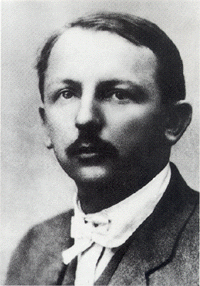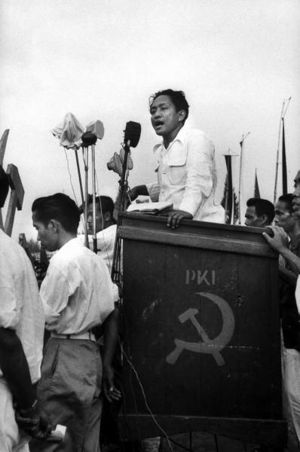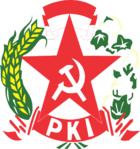الحزب الشيوعي الإندونيسي
الحزب الشيوعي الإندونيسي Communist Party of Indonesia Partai Komunis Indonesia | |
|---|---|
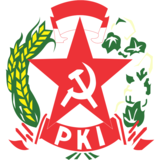 | |
| الاختصار | PKI |
| المؤسس | هنك سنيڤليت |
| تاريخ التأسيس | مايو 1914 |
| المقر الرئيسي | جاكرتا |
| عدد الأعضاء | 3 مليون (1960) |
| الأيديولوجية | الشيوعية، اللنينية-الماركسية |
| الانتماء الدولي | Comintern (حتى 1943) |
الحزب الشيوعي الإندونيسي (بالإندونيسية: Partai Komunis Indonesia، PKI) هو حزب شيوعي في إندونيسيا والذي كان قائماً في منتصف القرن العشرين. كان أكبر حزب شيوعي غير حاكم في العالم قبل القضاء عليه عام 1965 وحظره في العام التالي.[1][2]
البدايات
التأسيس والتطور
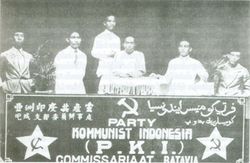
اجتماع الحزب في باتاڤيا (جاكرتا حالياً)، 1925.
ثورة 1926
العودة فيما بعد الحرب
ع 1950
ع 1960
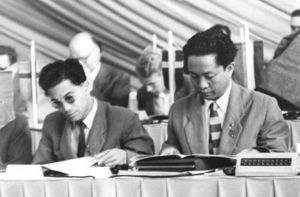
Dipa Nusantara Aidit (right) and Revang of PKI at the Fifth Congress of the Socialist Unity Party of Germany, East Berlin, 11 July 1958
القتل الجماعي ونهاية الحزب
| الأحزاب الشيوعية |
|---|
 |
تطورات ما بعد 1965
نتائج الانتخابات
نتائج الانتخابات التشريعية
| الانتخابات | إجمالي المقاعد المحرزة | إجمالي الأصوات | النسبة في الأصوات | نتيجة الانتخابات | الزعيم الانتخابي |
|---|---|---|---|---|---|
| 1955 | 39 / 257
|
6,176,914 | 16.4% | ▲39 مقعد، معارضة | Dipa Nusantara Aidit |
| Indonesian Constituent Assembly election, 1955 | 80 / 514
|
6,232,512 | 16.47% | ▲80 مقعد، معارضة | Dipa Nusantara Aidit |
انظر أيضاً
المصادر
مصادر عامة
- Crouch, Harold (1978). The Army and Politics in Indonesia. Ithaca, New York: Cornell University Press. ISBN 0-8014-1155-6.
- Mortimer, Rex (1974). Indonesian Communism Under Sukarno: Ideology and Politics, 1959-1965. Ithaca, New York: Cornell University Press. ISBN 0-8014-0825-3.
- Ricklefs, M.C. (1982). A History of Modern Indonesia. London: MacMillan. ISBN 0-333-24380-3.
- Sinaga, Edward Djanner (1960). Communism and the Communist Party in Indonesia (MA Thesis). George Washington University School of Government.
- Roosa, John (2006). Pretext for Mass Murder, The September 30th Movement & Suharto's Coup D'état. Madison, Wisconsin: University of Wisconsin Press. ISBN 978-0-299-22034-1.
الهوامش
وصلات خارجية
- People of Indonesia, Unite and Fight to Overthrow the Fascist Regime
- Defence speech given by Sudisman in 1967
- Shadow Play - Information regarding the 1965 coup and subsequent persecution of the PKI.
- The First Period of the Indonesian Communist Party (PKI): 1914-1926
قراءات إضافية
- Jochen Hippler, Nasr Hamid Abu Zaid, Amr Hamzawy: Krieg, Repression, Terrorismus. Politische Gewalt und Zivilisation in westlichen und muslimischen Gesellschaften. ifa, Stuttgart 2006, S. 55-58 (Review)
- Hunter, Helen-Louise, (2007) Sukarno and the Indonesian coup : the untold story Westport, Conn. : Praeger Security International. PSI reports (Westport, Conn.)ISBN 9780275974381 (hbk.)ISBN 0275974383 (hbk.)
- J.L. Holzgrefe / Robert O. Keohane: Humanitarian Intervention: Ethical, Legal and Political Dilemmas. Cambridge (2003). ISBN 0-521-52928-X, S. 47
- Mark Levene u. Penny Roberts: The Massacre in History. (1999). ISBN 1-57181-935-5, S. 247-251
- Robert Cribb, 'The Indonesian Marxist tradition', in C.P. Mackerras and N.J. Knight, eds, Marxism in Asia (London: Croom Helm, 1985), pp. 251–272 [1].
الكلمات الدالة:
This article contains content from Wikimedia licensed under CC BY-SA 4.0. Please comply with the license terms.
تصنيفات:
- Short description is different from Wikidata
- Articles with hatnote templates targeting a nonexistent page
- الحزب الشيوعي الإندونيسي
- Comintern sections
- أحزاب سياسية تأسست في 1914
- أحزاب شيوعية محظورة
- الصحوة الوطنية الإندونيسية
- أحزاب سياسية منحلة في إندونيسيا
- تأسيسات 1914 في الهند الشرقي الهولندية
- أحزاب سياسية انحلت في 1966
- انحلالات 1966 في إندونيسيا
